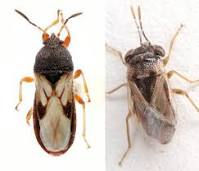Heat Stress vs. Drought Stress: What’s the Difference?
- jamiebellucco
- Jul 31
- 2 min read

When summer heats up, your lawn can struggle in two main ways. Knowing which one you’re dealing with will help you treat it correctly and keep your grass green all season.
1. Heat Stress
What it is: Grass blades actually overheat when the air and sun get too intense—even if the soil has enough water.
How to spot it:
Leaf curling or folding: The blades roll up or curl inward in the afternoon.
“Glassy” tips: You might see shiny or speckled tips where cells burst from heat.
Quick recovery: The lawn looks crispy at 4 PM but mostly recovers by early morning.
Why it matters: Overheated grass can’t make food properly (photosynthesis slows), and the cells can get damaged if heat continues day after day.

Easy fixes:
Mow higher. Set your mower blade ¼–½” higher than usual so taller grass shades the soil.
Water in the morning. Aim for before 9 AM so leaves have time to dry and won’t trap heat.
Create shade. Use garden umbrellas, shade cloth, or plant a fast-growing annual vine near problem spots.
2. Drought Stress
What it is: The soil is too dry, so roots can’t pull up enough moisture to replace what’s lost through the leaves.
How to spot it:
Blue-gray color: The whole lawn takes on a dull, dusty look.
Footprints stay down: Walk on the lawn and the blades don’t spring up—they stay flat.
Soil pulls away: If you tug on a small clump, the soil stays intact on the roots (it’s too dry).
Why it matters: Without enough water, grass can go dormant or even die if dry periods last too long.

Easy fixes:
Deep, infrequent watering. Give about 1–1½” of water once or twice a week. Water slowly so it soaks in 6–8” deep.
Aerate the soil. In spring or fall, poke holes or use a core aerator. This helps rain and irrigation reach roots more easily.
Mulch or compost top-dress. Spread a thin layer (¼–½”) of compost over thin or worn areas to improve water retention. (Ask about our Top Dressing)
Check your sprinkler. Make sure sprinkler heads cover evenly—no dry patches or puddles.
3. Quick Comparison Table
Feature | Heat Stress | Drought Stress |
Main cause | High air/leaf temperatures | Not enough soil moisture |
Key sign | Curling blades that recover at night | Gray-blue turf, lasting footprints |
Recovery clue | Bounces back overnight | Needs watering to bounce back |
First step | Raise mowing height, AM watering | Deep weekly watering, aeration |
4. Prevention Tips for Both
Watch the forecast. Ease off on fertilizing or heavy treatments when a heat wave or dry spell is coming.
Keep soil healthy. Healthy soil holds moisture and buffers temperature swings—feed with compost yearly.
Adjust your schedule. If in doubt, water early and mow slightly higher during the hottest months.
Bottom Line
Heat stress shows up as curled, shiny blades that bounce back overnight.
Drought stress looks like a uniform gray-blue lawn that stays flat and shows footprints.
Match your treatment—cooling tactics for heat, deep watering for drought—and your lawn will weather summer’s worst with less fuss!





Comments